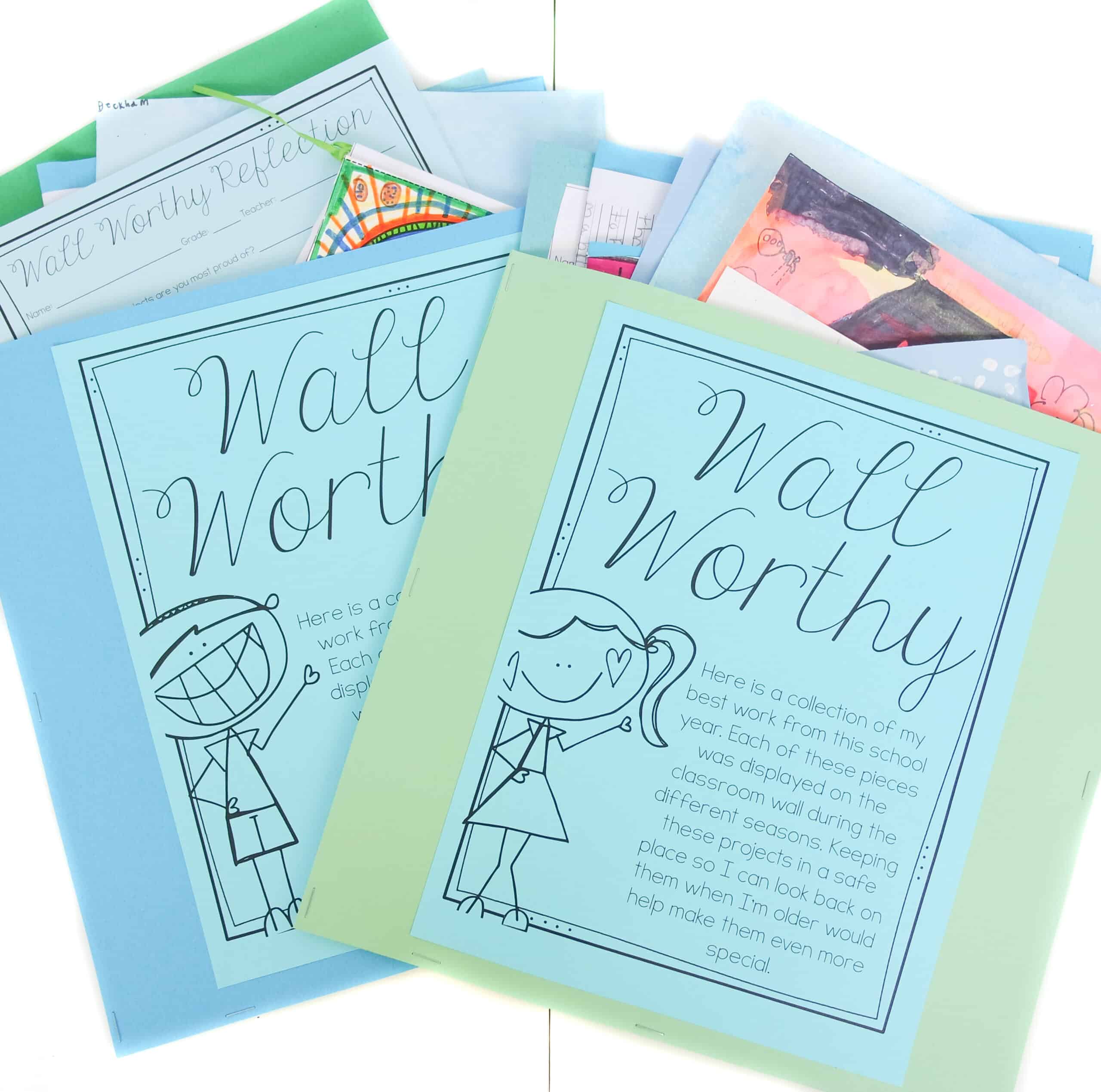
An organized classroom runs like a well-oiled machine, and you don’t have to be the only one maintaining that machine. The most organized classrooms are made that way because of collaboration between the teacher and the students. You’re all using the space, so it makes sense you work together to organize and maintain it.
This post contains affiliate links for which I may make a small commission at no extra cost to you should you make a purchase.
My secret to maintaining a classroom that is extremely well-organized is a simple recipe.
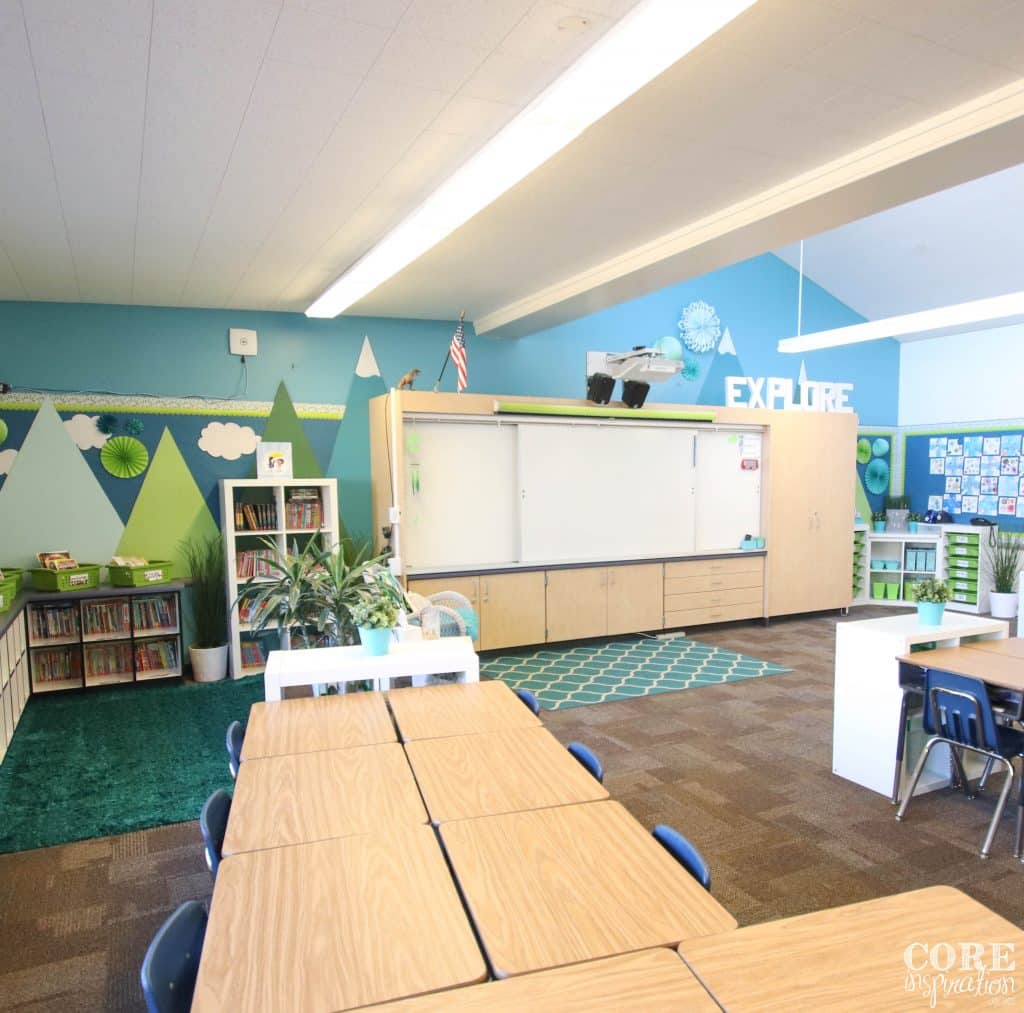
Here is a peek into how you can collaborate with your students to maintain organization systems that boost student independence, create a productive learning environment, set a calm mood in your classroom, and free up your mind & energy to focus on the most important part of your job: teaching and caring for your students.
When setting up the classroom each year, spend a little extra time creating a library organization system that can be maintained by your students. This will save you time and energy in the long-run, and make your classroom library an inviting space where students take ownership.
Adding a sticker with a picture to the inside of each book makes it easy for all students to return books to the proper location in your library. Simply place an image sticker on the inside of each book that matches the image label on the shelf or bin where the book belongs. This pre-made labeling kit can save you countless hours of time.
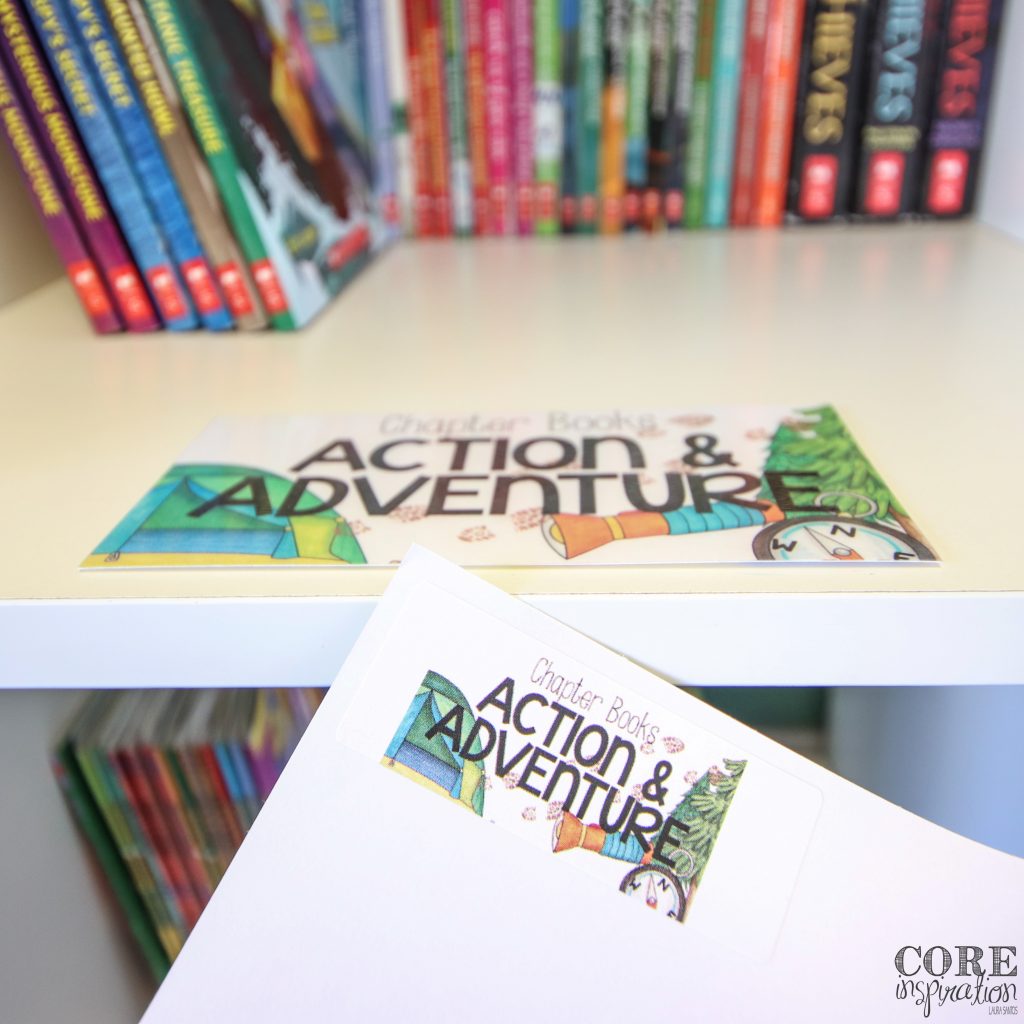
Even if it’s mid-year, you can give your classroom library an organization overhaul by recruiting the help of your students during a special library organization day. Spend time talking about genres, and categorizing books in teams before adding stickers and labels. Your students will likely find some new reading gems during this special activity, and will quickly learn exactly how their classroom library is organized.
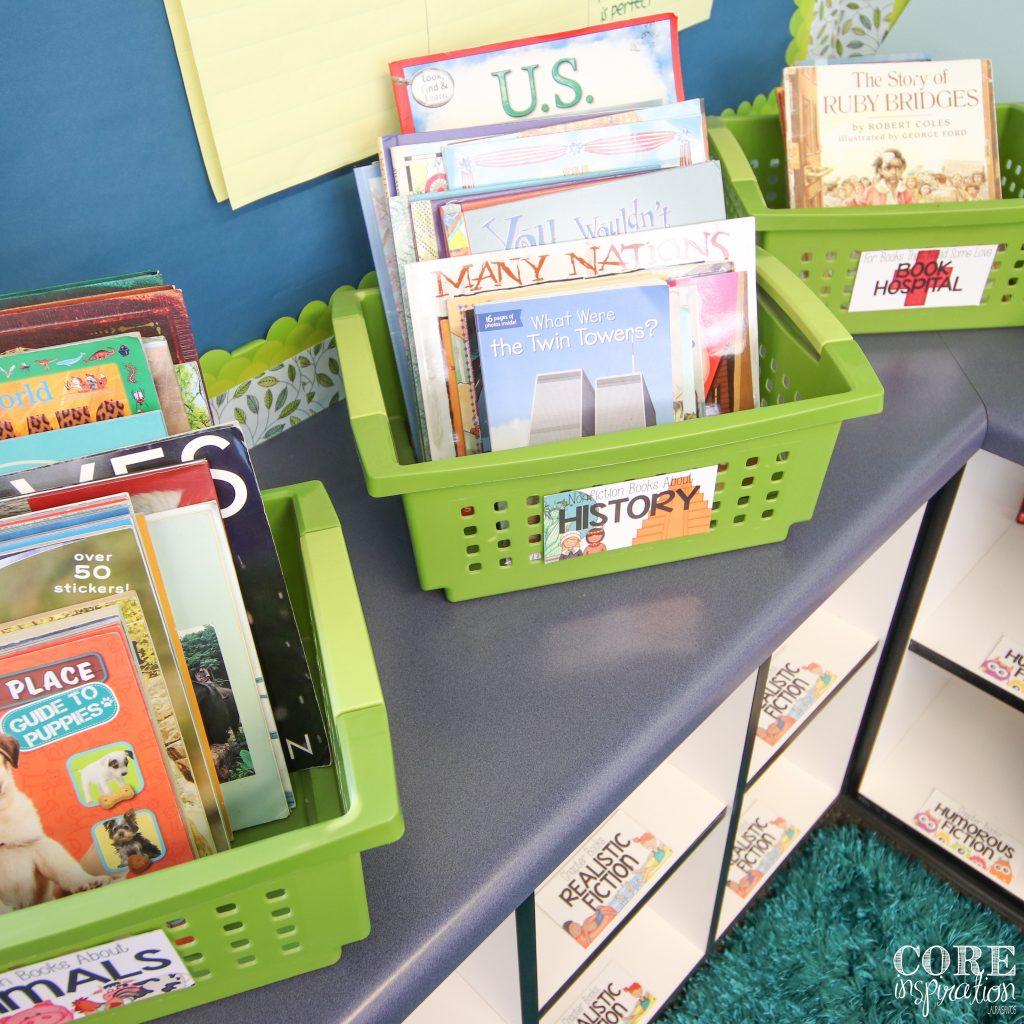
Model your expectations for checking out, and returning books. Give students time to practice these expectations as you give them immediate feedback. Start with one or two students checking out books as the rest of the class observes and shares what they notice. Then, dismiss groups of students to check out books while you carefully watch and share positive feedback or advice.
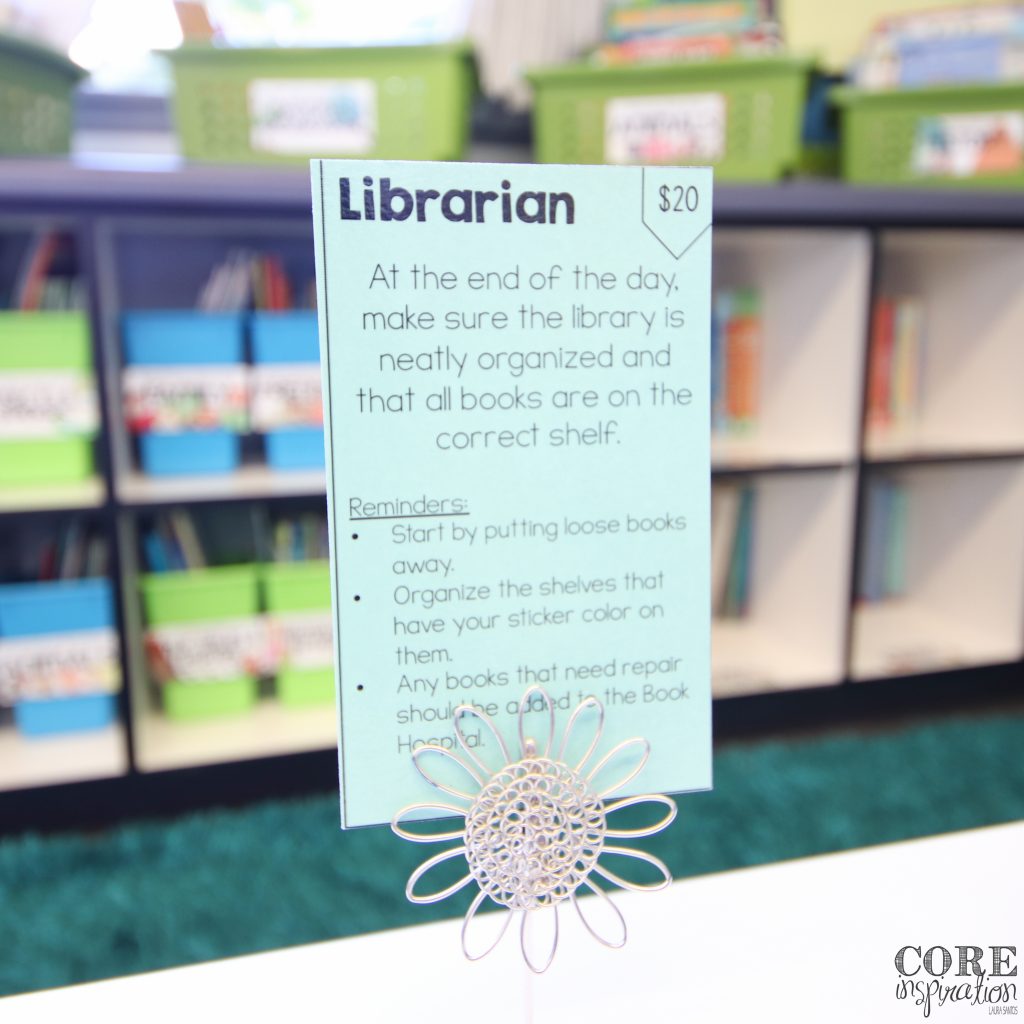
After your organization system is in place, hire a team of classroom librarians. These students will be responsible for dusting the library shelves and making sure all the books are tucked neatly into their space, or thoughtfully on display during tidy-up time each day.
Book boxes & bins are an amazing way to protect your books from the wrath of student desks, but they can become a black hole without clear expectations. Begin by setting your expectations for how many books students can keep in their book box (4 is my suggestion). Take time to demonstrate how to store books carefully inside a bin/box. Discuss the purpose of a book box – to protect the books so everyone who is interested has the opportunity to read them.
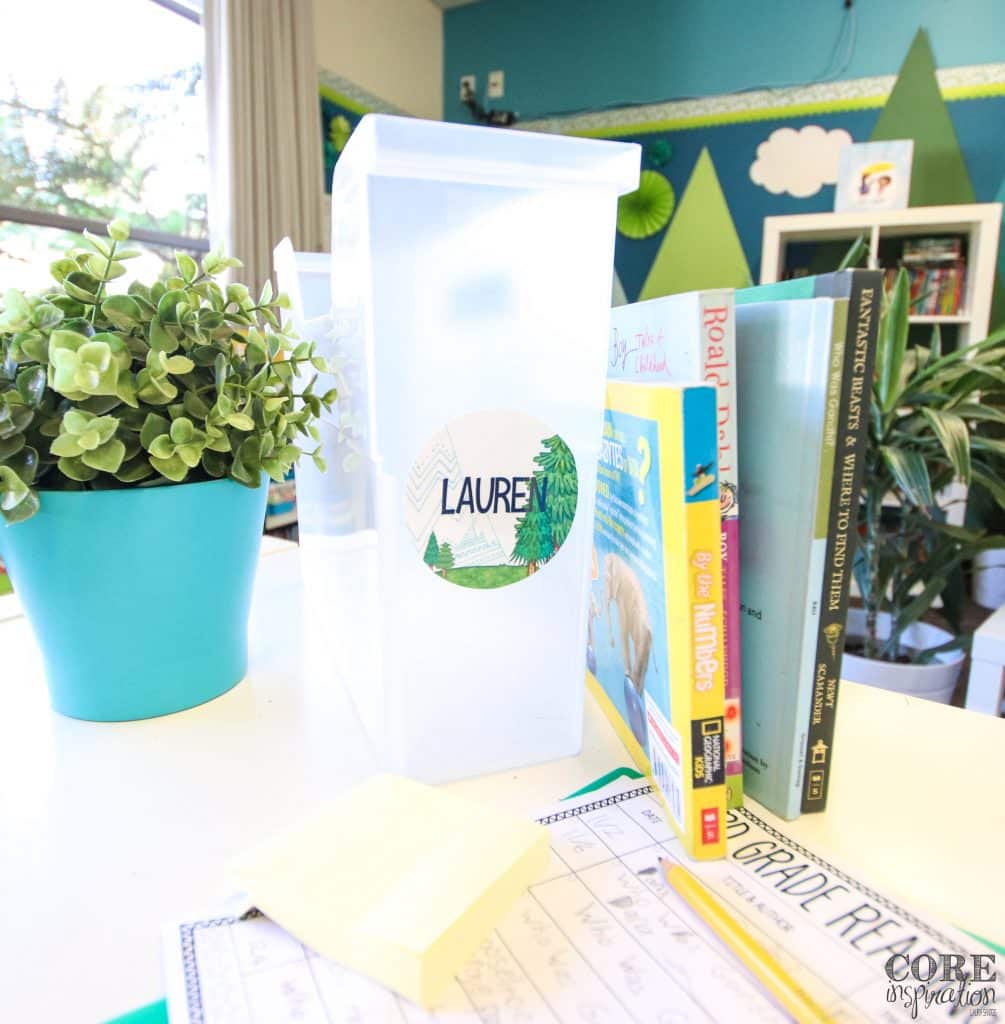
After students have practiced these expectations, hire a few students to work as your Book Box Battalion. During tidy-up time each day, these students can check their classmates’ book bins to make sure no one has too many books squeezed into their bin, and that all books are being stored with care. If the Book Box Battalion comes across a bin that does not meet expectations, they can place that bin on the owner’s desk/workspace so that students can get organized before heading home for the day.
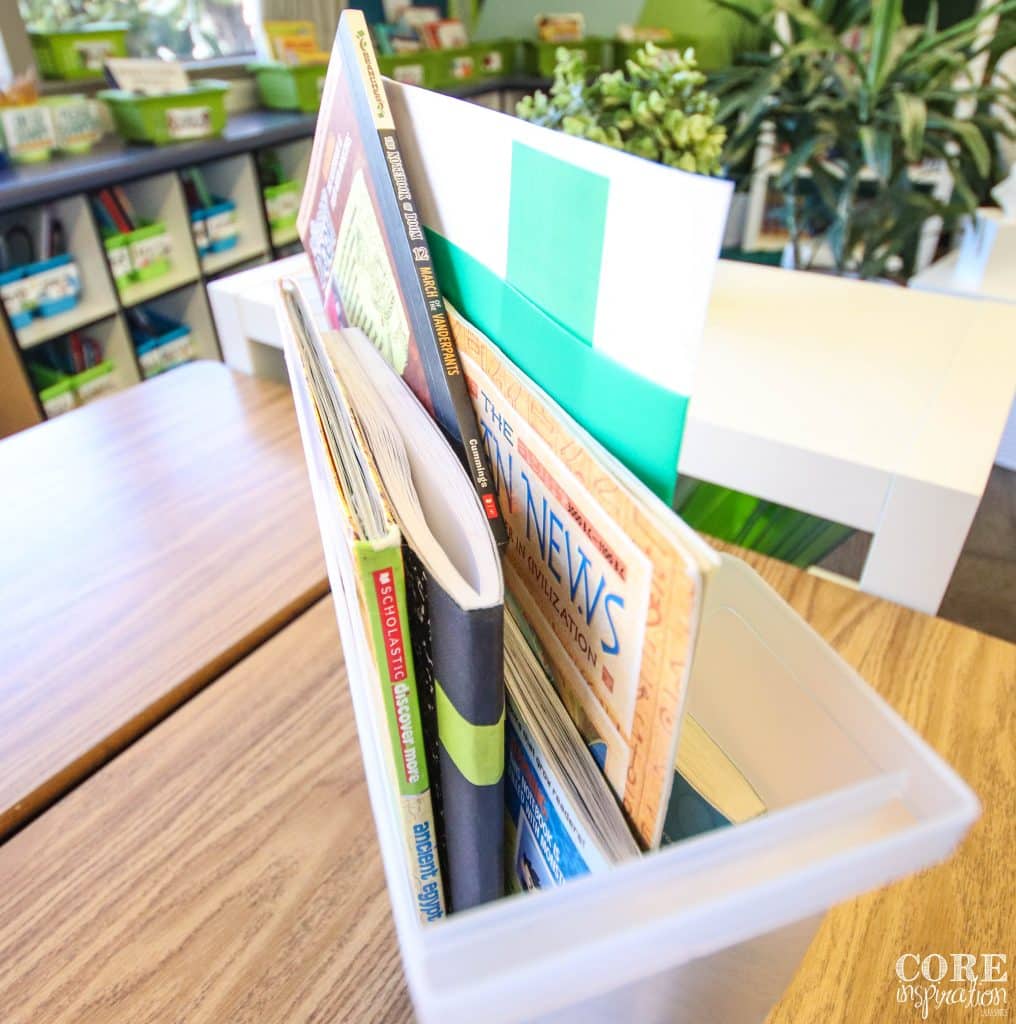
Creating an area where students can access supplies without having to ask for assistance, or permission is essential for conserving your time and energy while teaching. When students have access to the supplies they need, interruptions to your instruction are reduced, and students grow as self-directed learners. When planning a lesson, think through all the supplies students will need, and have them readily available in an easy-to-access location.
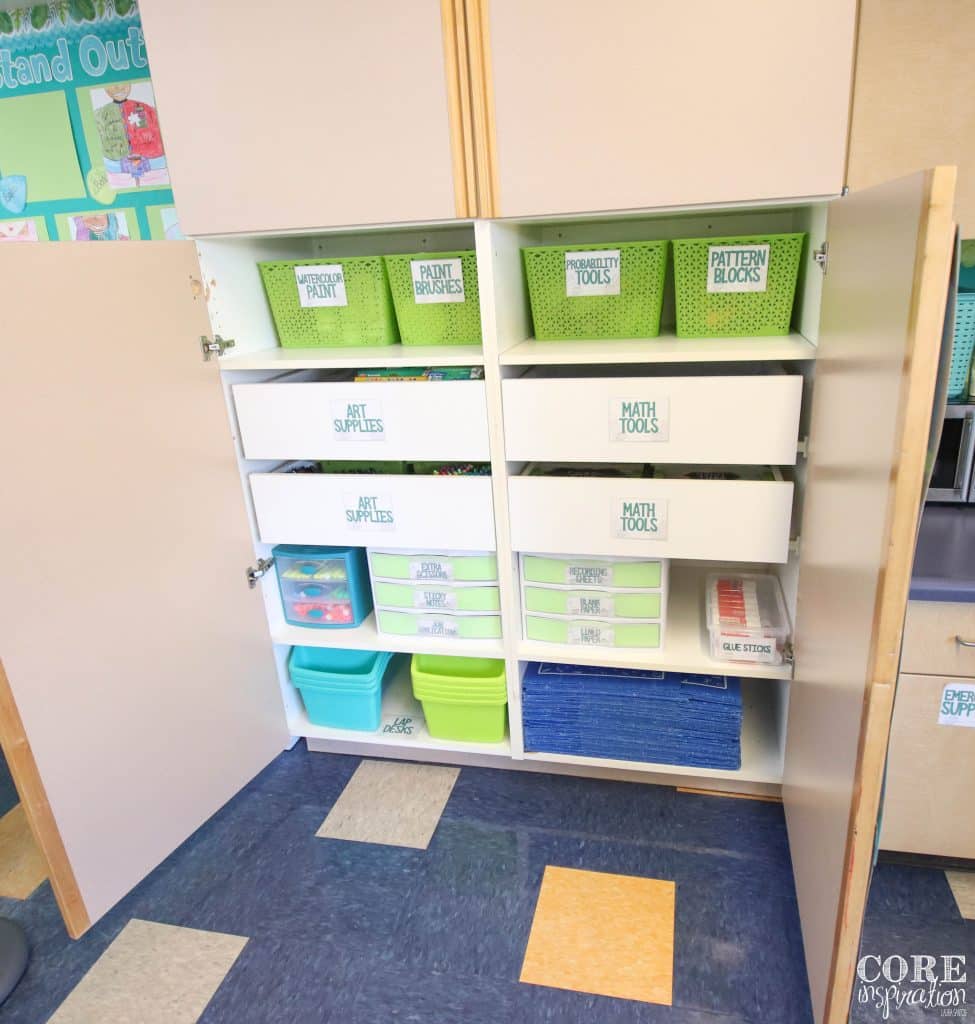
For more frequently-used supplies like paper, glue sticks, and manipulatives, create student supply stations in easy-to-reach locations. Keeping papers tucked away in drawers makes it easier for small hands to grab what they need without leaving behind a cluttered mess.
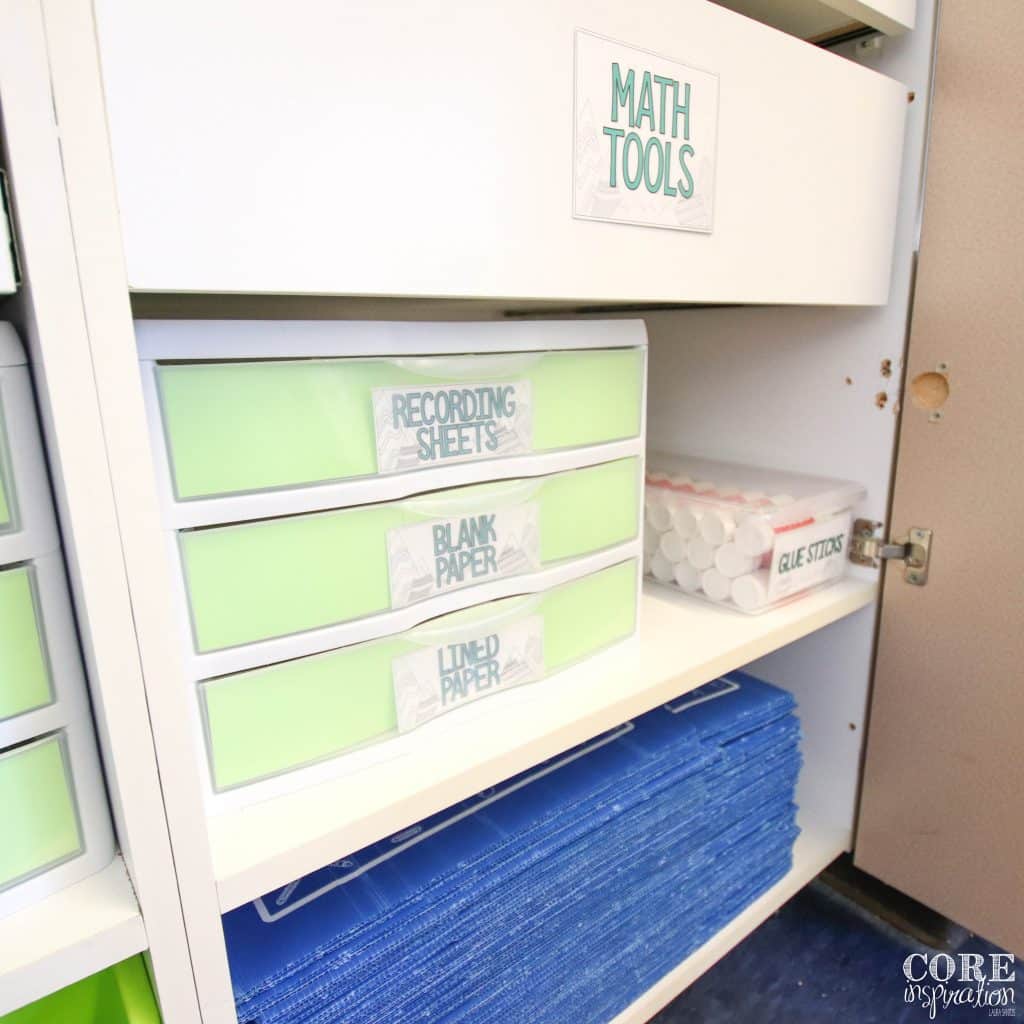
Keeping craft supplies like glue sticks in shoe bins makes it easy to move these supplies from the supply station to an open area during special projects.
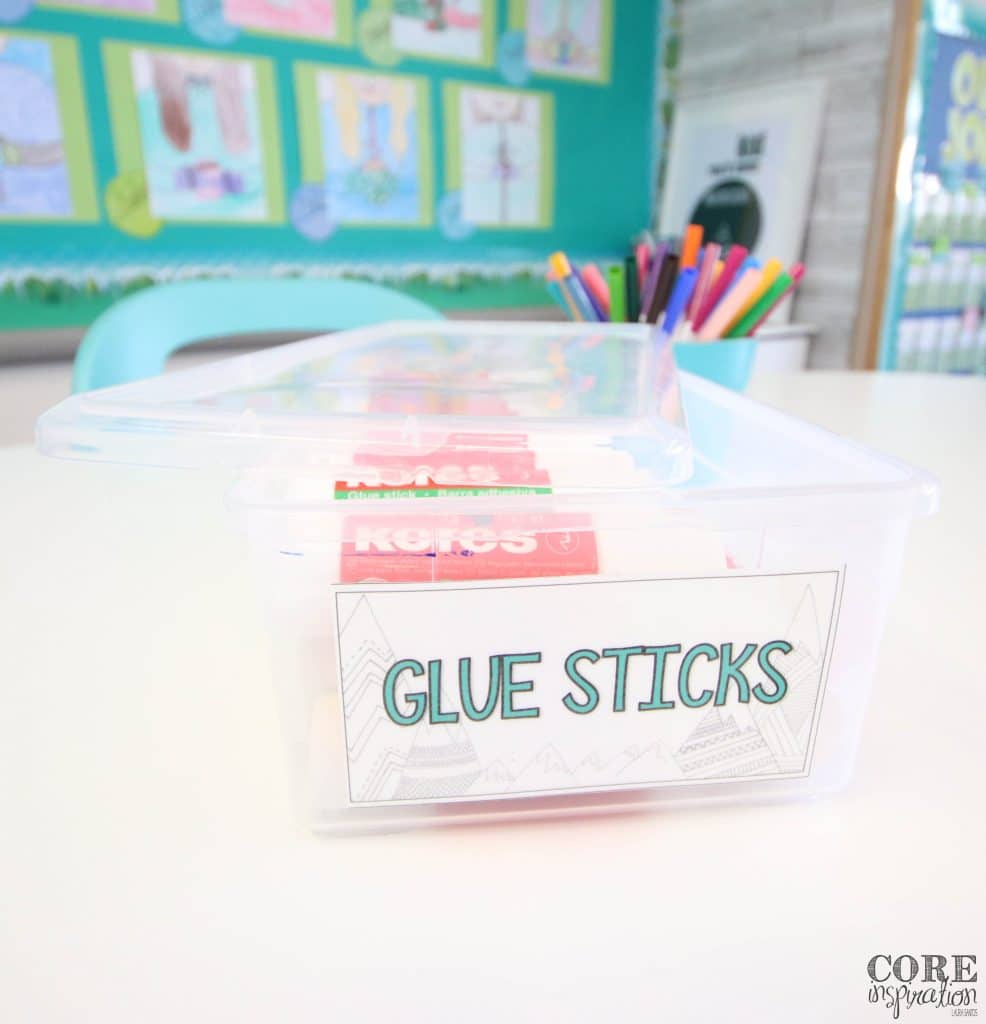
Using bowls for smaller manipulatives and supplies makes it easy for students to grab what they need, and quickly place everything back where it belongs when tidying up after activities.
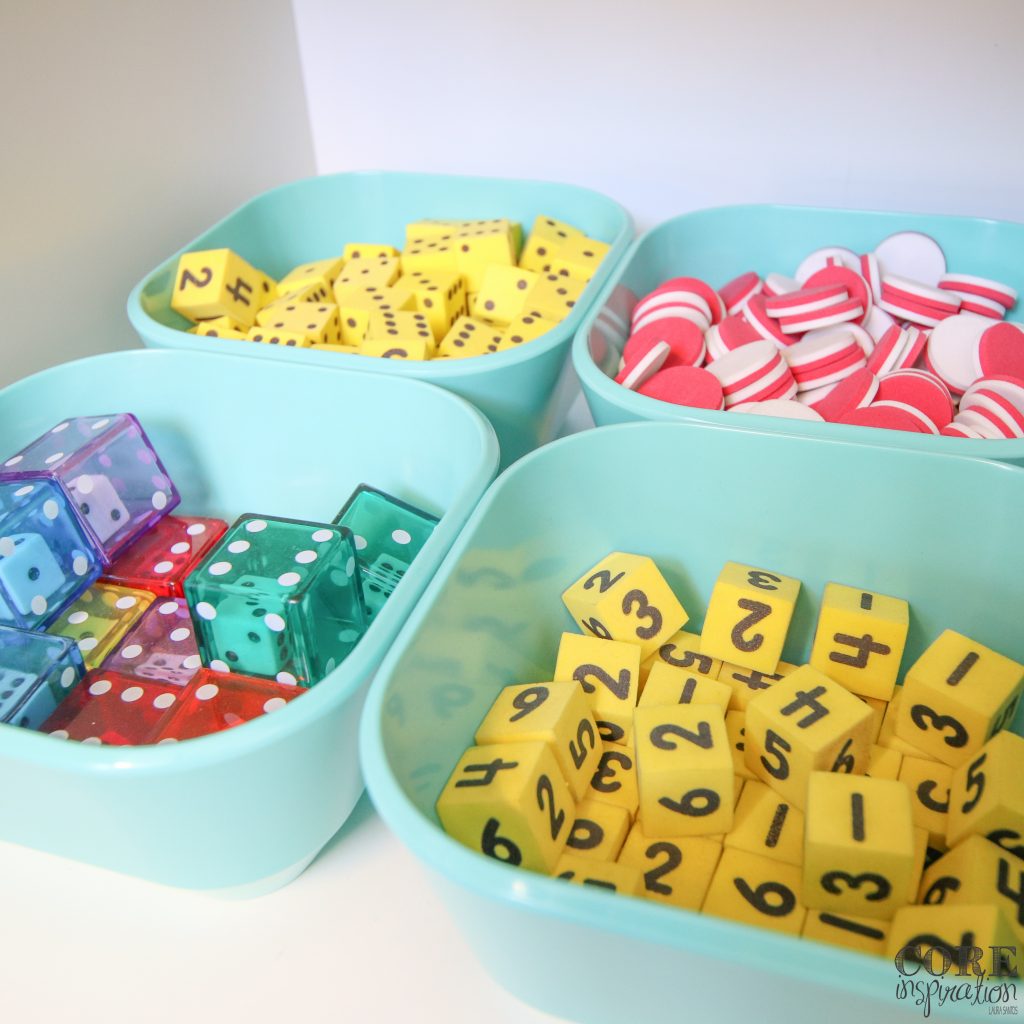
Of course, using matching bins is another easy way to bring a visually calm uniformity to any space, but bins can be very expensive. Rather than opting for less expensive bins that often break after a couple of years, select a higher-quality bin you know you’ll love for years to come. Buy a few to start with, mixing them in with hand-me-downs or garage sale finds, and build your collection bit by bit each year.
It took me eight years to get all the bins in my classroom to match, but many of the bins we use daily are sturdy bins purchased during my first year of teaching. Don’t expect to have everything matching and complete in your first years.
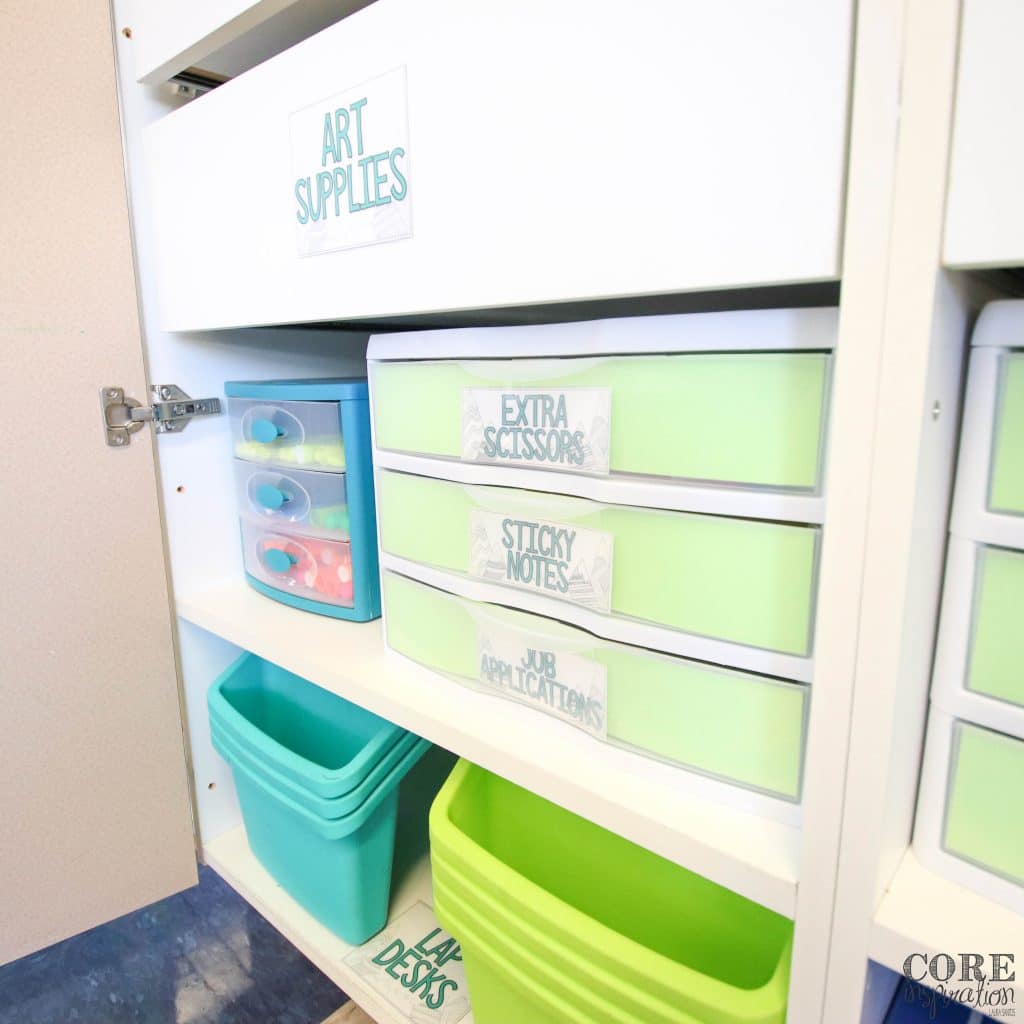
Once you have the bins, bowls, and boxes arranged in a way that boosts student independence, snap a picture of the space. Take time to model how to gather supplies from these student supply stations, and give students time to practice what you’ve modeled while giving them immediate feedback.
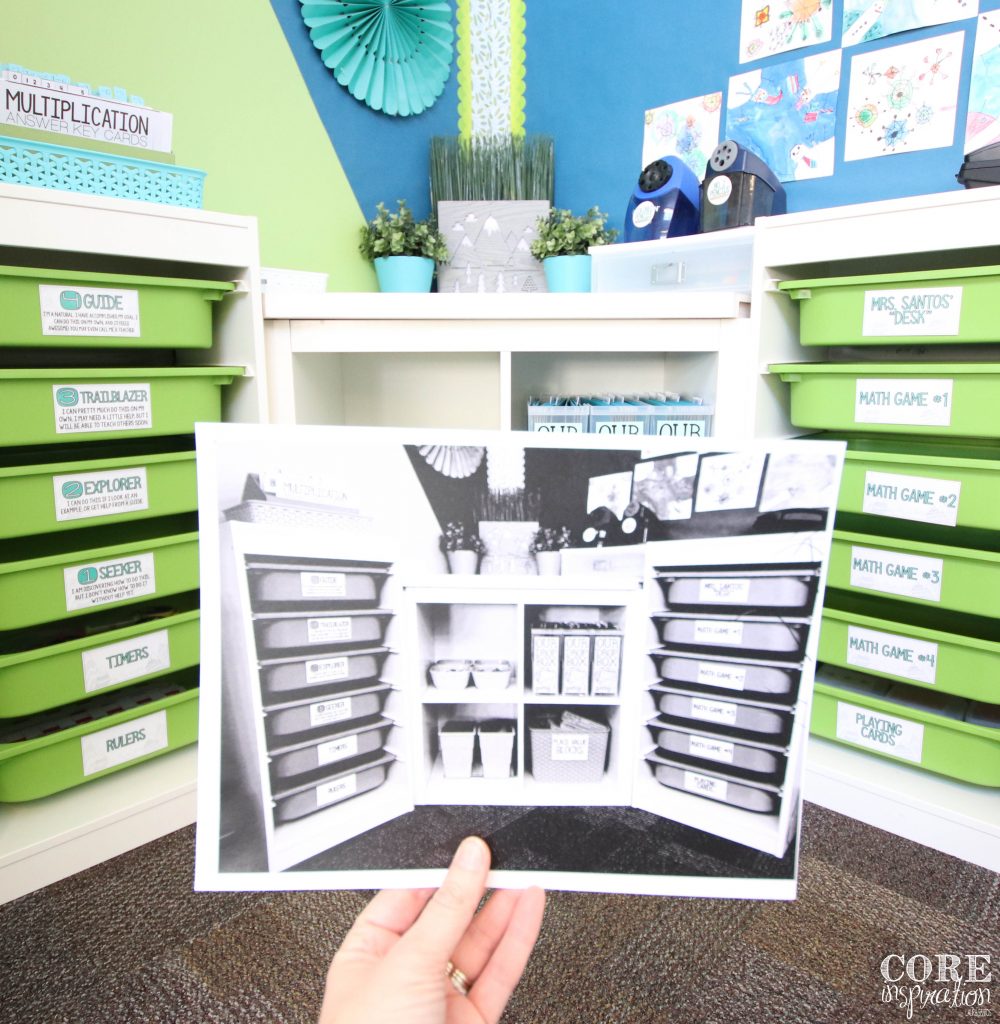
Hire students for a few class jobs to help maintain this organization day-to-day. Station Managers can dust and organize materials at each supply station during tidy-up time each day. The photos you took of the space can help students who need scaffolding for this job. A Student Supply Supervisor can inventory your supplies at the end of each day, and leave you a note if you need to make copies of commonly-used recording sheets, or replenish the paper drawer before tomorrow.
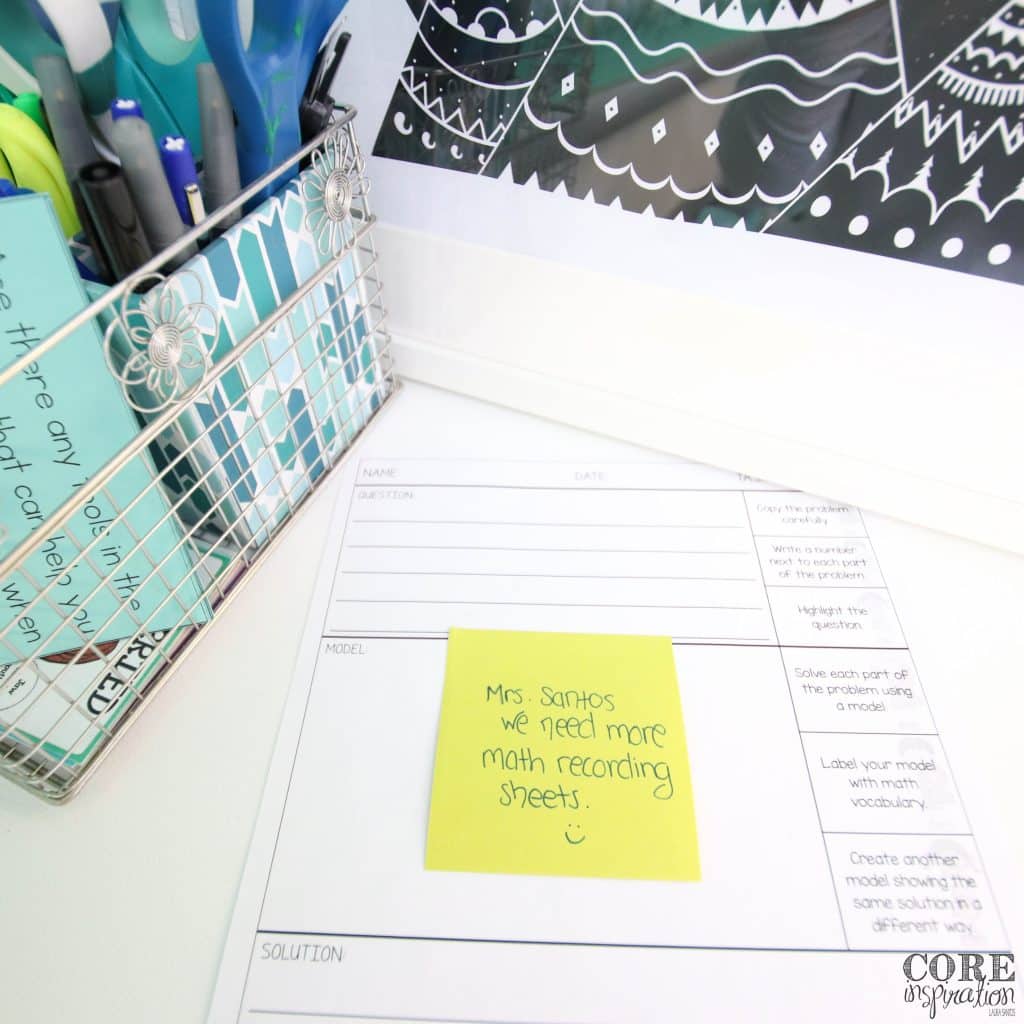
As you know, there is a spectrum of organization skills when it comes to desk organization for students. Many teachers now use flexible seating and have students store what would be inside a desk in a cubby. If that’s the case for you, replace “desk” with “cubby” for all the information shared here.
Model your expectations for taking items out of desks, and putting them back carefully so they last all year. Give students time to practice these expectations as you give immediate feedback. Start with one or two students practicing as the rest of the class observes and shares what they notice. Then, dismiss groups of students to practice while you carefully watch and share positive feedback or advice.
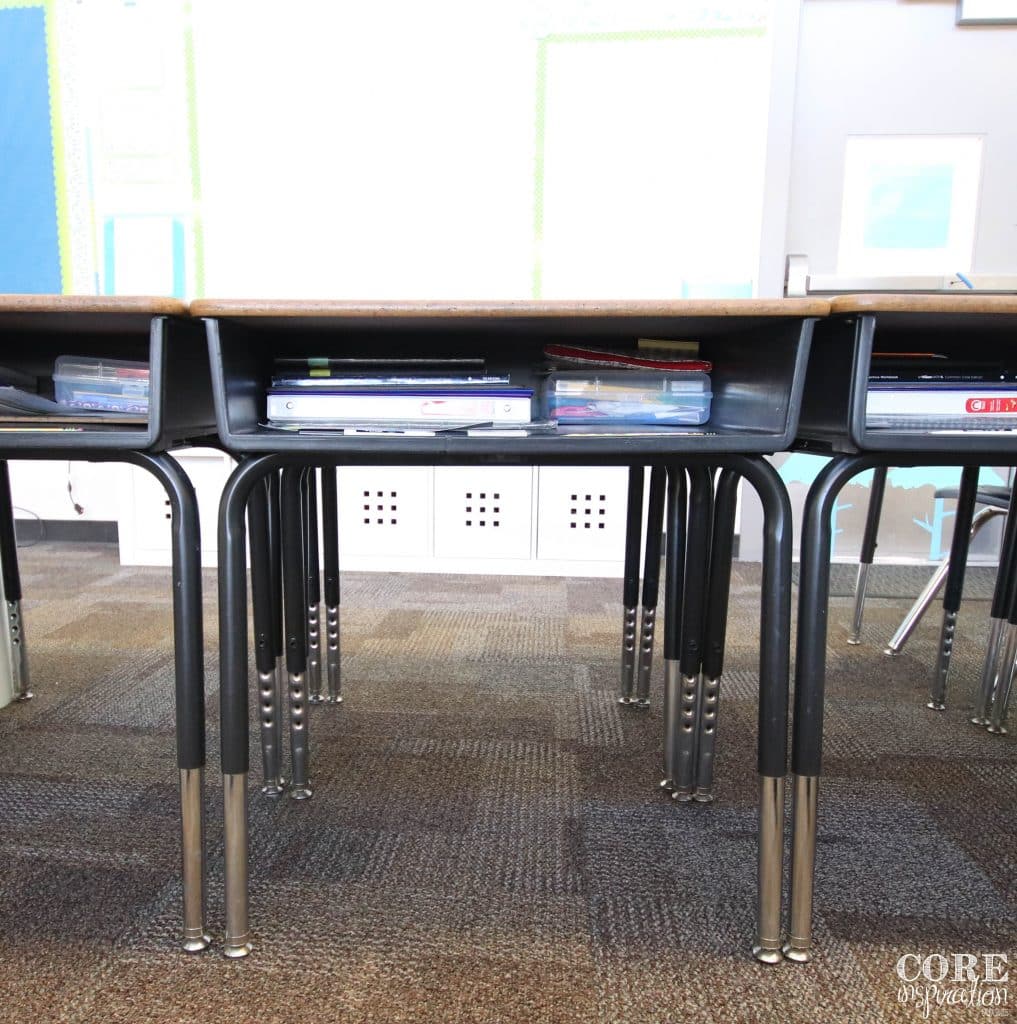
Within the first few days of school, it will be immediately apparent who needs organizational scaffolding when it comes to their desk. These students often benefit from a photo or diagram of an organized desk that can be used as a guide to get their space in order during tidy-up time each day.
For more general desk organization support in your classroom, consider hiring Desk Elves. During tidy-up time each day, these students walk around and quickly peek inside each desk to make sure students aren’t storing unneeded items like knick-knacks, loose papers, a hoard of pencils, or any shared supplies. If a Desk Elf sees any of these items, he/she places a tidy-up ticket on that desk so the student knows they need to get organized before heading home for the day.
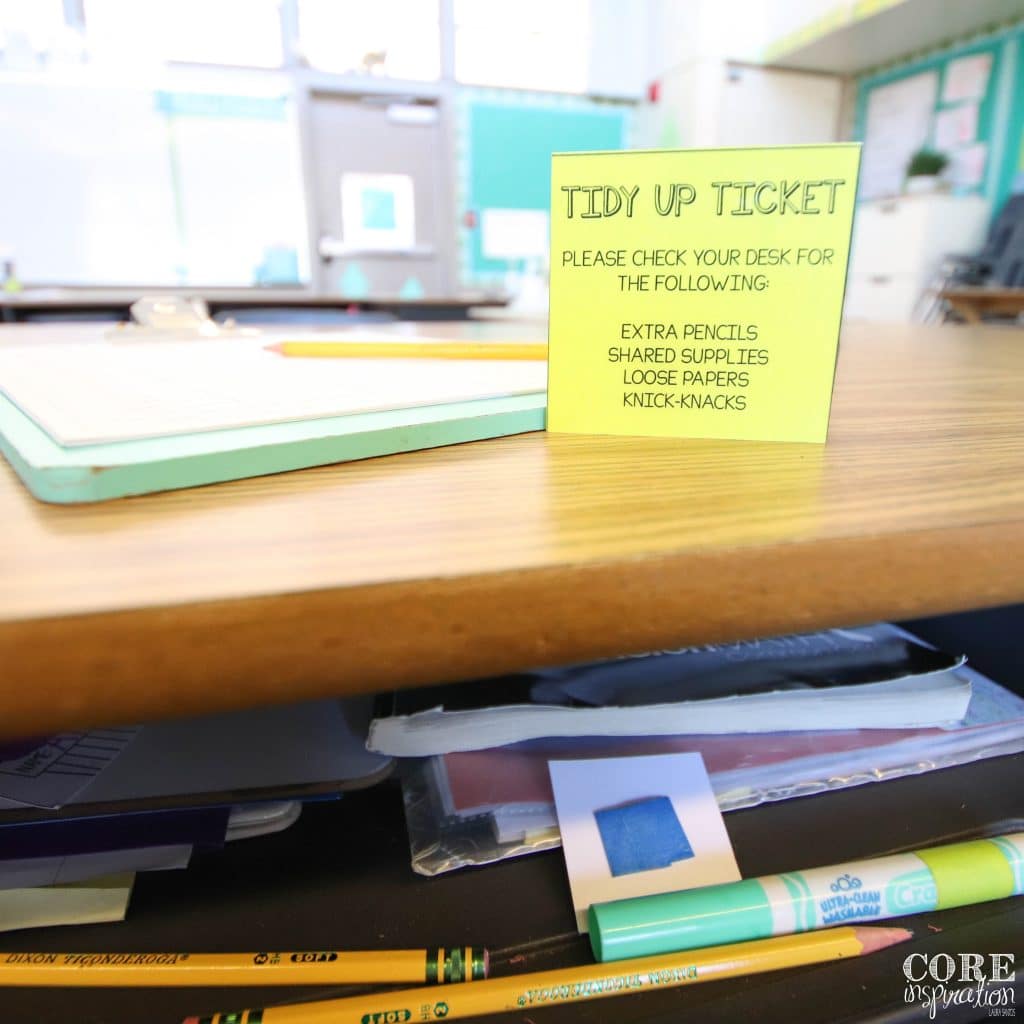
Another way to keep desks tidy is through monthly seat changes. Rather than having students move their entire desk to a new location, have them “move out” of their old desks by placing their supplies on their chairs, and “move into” their new desks. This routine opportunity to take everything out of the desk makes tidying more consistent.
Keep in mind, collaboration between students and teachers makes it easier to maintain organizational structures in the classroom. Although these routines and jobs help students take ownership of their organized learning environment, it is essential they see you placing value on an organized space too. There is no better way to do this than by participating in tidy-up time each day. Show students you get organized right alongside them by helping with class jobs and organizing your own workspace.
By implementing these organization tips, you will notice a boost in student independence, more productivity, a calmer mood in your classroom, and more time and energy to focus on teaching and caring for your students. Enjoy! 🙂
This post contains Amazon Affiliate links to make it easier for you to find the organizational tools shared in this post. To see all my favorite Amazon finds, visit my Amazon Influencer page here.

I’ve been an elementary teacher for ten years, and love sharing tips and resources that make differentiated learning more manageable for you. Thank you for visiting.
Learn More
Dropping by with weekly tips, classroom strategies, and free content created with you in mind.
Join me and other 2nd through 4th grade educators in the Teaching with Core Inspiration Facebook Group. This is a place to collaborate, ask questions, and learn how teachers like you are using Core Inspiration resources in their classrooms. Hope to see you there!
© 2024 Core Inspiration ∙ Website by KristenDoyle.co
10 Responses
Hi! I’ve followed you on Instagram for awhile and love your resources and classroom. I’m really the most curious about how you store your math manipulatives. I feel like I have SO MANY manipulatives and don’t know where to begin in organizing them.
Hi Zoe, thank you for reaching out. 🙂 I mostly use small clip top boxes and bins, and rotate the manipulative we need for our current units into our corner nook area what all our math supplies are stored. 🙂 If you DM me on Instagram, I’m happy to do a story about this one day so you have more of a visual.
Hi! I’ve been looking at your blog for years now! I feel like 2019-2020 is my year to finally get it right.
Where did you get the clear book bins from?
I feel like I have a good idea of what I’m going to do next year for organization, but I’m still wavering on book boxes. This was the first year ever that they were a nightmare so I kind of want to nix them all together. Then I see nice ones again.
Hi Jennifer,
Thank you for the kind message, and for being a long-time reader of the blog. 🙂 I really appreciate your encouragement. I cannot recommend these bins for box boxes enough. They are definitely worth the investment because they hold up really well (I’m using mine for the third year now and they will still be good to go for next year). They also look so crisp and clean all the time because the books are so well contained inside. I bought mine from the Container Store, but Amazon sells them for a cheaper price here (this is my affiliate link…if you purchase with this link, a very very small percentage of your purchase will be given to me so I can buy supplies for my own classroom). Please let me know if you have any additional questions as you get organized for your best year yet! 🙂
Warmly,
Laura
I always love finding blogs and posts about organization in the classroom, it seems there are so many great ideas! But I really want to know, where did you find your dice? My kids would just love them, they would only have to roll once and get 2 numbers!
Hi Elizabeth,
Thank you! I ordered the dice on Amazon. You can find them on my Math Workshop favorites list here.
Warmly,
Laura
Where did you get the lap desks, I don’t see on you amazon store. Also what are the blue items that look like recycle bins? They are in one of the pictures on the bottom shelf.
Hi Kathryn, my lap desks are from Michael’s. The blue items are privacy shields that are used during testing. You can find those on Really Good Stuff here.
Oh my goodness!!!! Your ideas, photos, and explanations are EXACTLY what I needed to see???????????????????? Thank you for sharing. I am heading to your TPT right one????????????????????????????????
Thank you Vanessa! So glad the post was helpful. 🙂